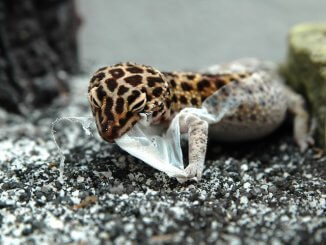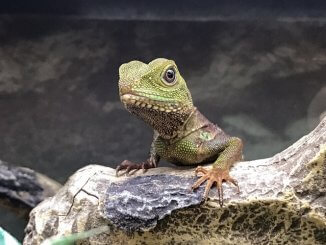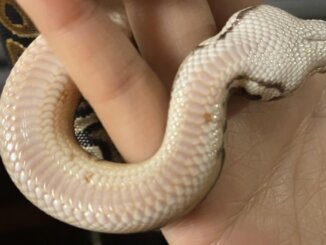An estimated 4.5 million households keep pet lizards or reptiles.
Lizards are very diverse with over 4,000 different species. Many of which make great pets for beginners.
Some of the best beginner lizards are Bearded Dragons and Leopard Geckos.
Correct husbandry and routine feeding schedules are key to keeping any reptile healthy and happy. Unfortunately the level of care that lizards’ need can be taken for granted and mistakes can be made.
Read below to discover our list of the top ten mistakes and how to avoid making them…
Mistake 10: Using Loose Substrate
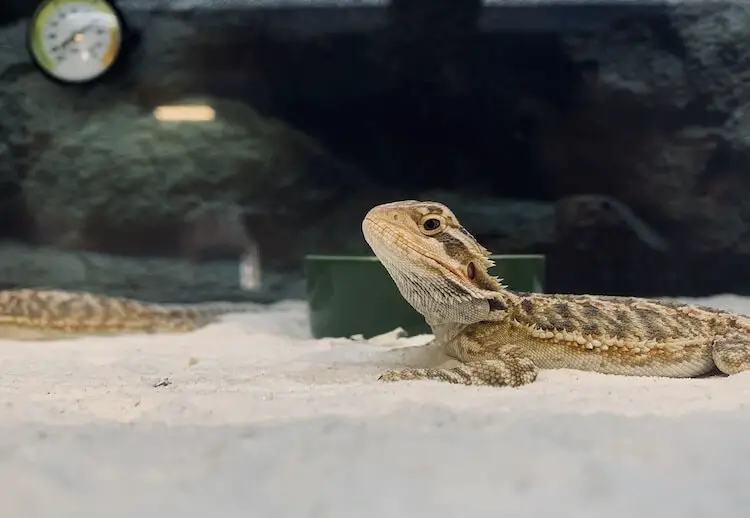
Gastro-intestinal impaction is a very avoidable, yet is a serious and common problem for Lizards.
Impaction happens when lizards ingest or eat their substrate. The substrate then gets caught in their gastro-intestinal and can lead to a wide variety of health issues, including blockage and starvation.
To remediate impaction your lizard will probably need specialized surgery.
Fortunately this serious problem can be easily prevented by using the correct substrate for lizards.
Gastro-intestinal impaction is caused by loose substrate. Using any of the following substrates in their enclosure is normally a bad idea:
- Sand.
- Ground walnut shells.
- Wood shavings.
- Alfalfa pellets.
Your lizard may accidentally eat some of their substrate when trying to eat their food.
Another cause of impaction may be a general under stimulation of your lizard leading to boredom. If your lizard’s enclosure doesn’t have enrichment (e.g. plants, hide-holes) and is too small they may turn to eating substrate. You can avoid this by allowing them to forage for their food and providing enrichment.
In both examples above the substrate will build up in their gut over time.
The best way to avoid impaction is to not use any loose substrate in their enclosure.
Instead choose substrates that are more compact or not likely to be ingested. For beginners suitable options include: reptile carpet, tile, or newspaper. They are much safer for your pet lizard and are easy to clean.
Mistake 9: Inconsistent Cleaning Routines
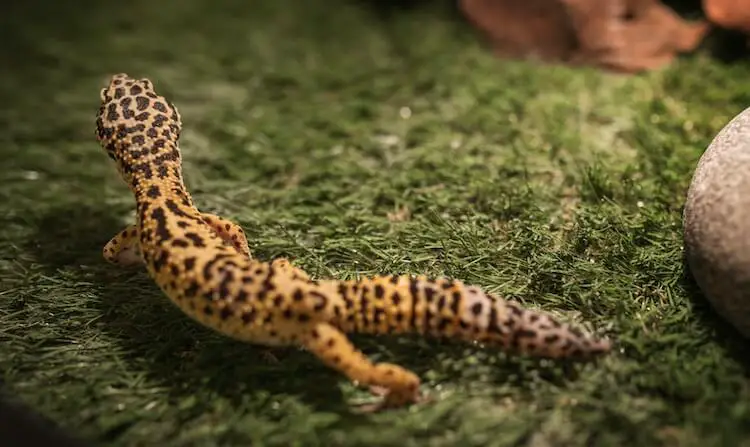
A very common mistake beginners make is not cleaning their lizard’s enclosure enough.
However, it is also possible to clean their habitat too much.
If you clean their enclosure too much your lizard will not be able to build up a strong immune system.
The opposite is also true. A dirty tank will cause pathogens to grow in their enclosure and cause infections.
Reptiles vary for how often their tanks should be deep-cleaned, but generally they should all be spot cleaned every day. A deep clean should be performed every two to four weeks depending on the species of lizard.
Using a cleaning checklist and schedule is a good idea for beginners.
Spot cleaning should be done daily. Remove any feces or dirty substrate from the habitat, and if necessary add some new substrate. Clean and replace all water dishes with fresh water – regardless if it is for drinking or soaking.
Deep cleaning requires more work and you should move your lizard to a temporary enclosure during cleaning and drying.
Start by removing all substrate and furniture. Dispose of the substrate and all furniture (except live plants) should be washed with soap and hot water. The tank should be washed with soap and hot water and then left to dry.
Finally, add new substrate and the cleaned furniture back before you put your lizard in!
Mistake 8: Forgetting About The Vet
This is one part of having a pet lizard that is often overlooked by many beginners and experienced herpetologists.
Just like a dog or a cat, lizards should have annual checkups at the vet.
They should also be taken to the vet if there are any signs of illness such as: skin coloration changes, lack of appetite, weakened stance or lethargy.
It is important that your lizard develops a relationship with both you and your vet – especially exotic-only vets. They will be able to provide sensible husbandry practices and healthcare.
Not all husbandry mistakes can be completely reversed with improved husbandry.
Sometimes infections or diet deficiencies may need a prescribed antibiotic that you cannot provide to it yourself.
Mistake 7: Incorrect Heating or Bulb Placement
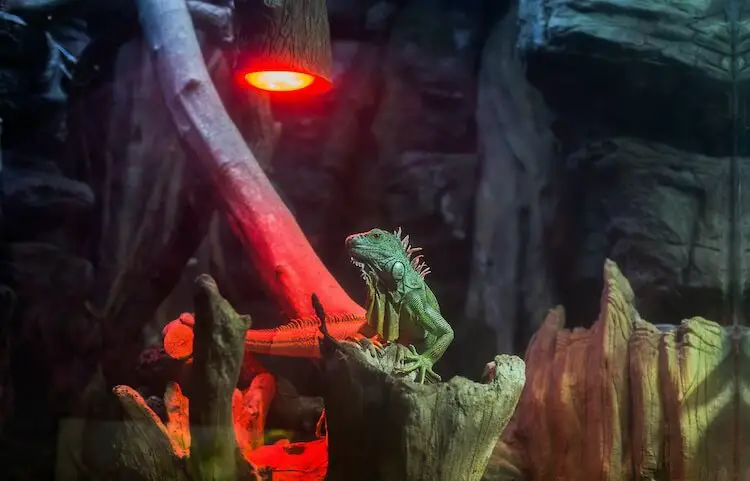
Lizards are cold-blooded. They are known as ectotherms.
All cold-blooded animals rely heavily on the environment to regulate their internal temperature.
Heating mistakes are very common with pet lizards and they are more complicated than an owner simply forgetting to provide a heat source:
- Putting a bulb within reach of your lizard.
- Mistakes setting up the heating bulb.
- Incorrectly reading the temperature.
- Using a strip or gauge thermometer instead of digital.
- Not using digital thermometers.
A serious beginner mistake is placing a bulb within reach of your lizard. This increases the chance that your lizard may get burned from the heat source and will cause serious skin damage.
Beginners also often choose to use a gauge thermometer in their tank.
Unfortunately gauge thermometers can be highly inaccurate, especially for a tank that should have exact temperatures. Using multiple digital thermometers is better for measuring the heat of the air inside the tank and the heat gradient.
You will also need to use a probe thermometer for basking spots.
For basking areas the surface temperature is more important than air temperature. Basking area temperatures are different for each breed, but it should only be measured with a probe thermometer. Other thermometers measure air temperature not surface temperature.
Finally, if you are using a heat mat, make sure the one you use has a thermostat. Without a thermostat it can be incredibly difficult to achieve and maintain the desired temperature.
Mistake 6: Assuming Lizards Are The Same
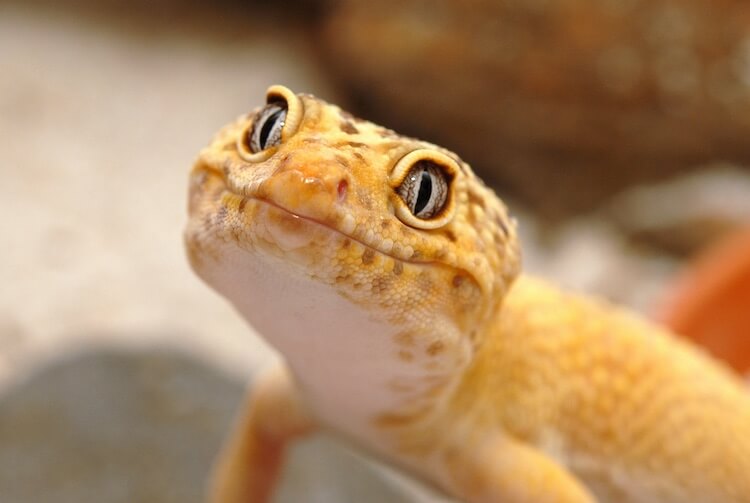
It is very common in the reptile industry for first-time owners to forget to research.
You should thoroughly research any lizard you plan on bringing home.
A lizard should never be an impulse buy.
Most pet stores sell them as hatchlings or juveniles. Some species are ten times smaller as hatchlings than their adult size. Beginners may purchase a baby and then quickly regret their decision as it grows to be much bigger than expected.
Many owners also adopt lizards that have very specific husbandry and housing requirements.
Without the money, time and experience to care for them properly the pets are often neglected or illegally released into the wild.
The simple and easy solution to this major problem is to do your research.
Lizards and many other reptiles require just as much thought and care as any other household pet. If you plan on getting a lizard, you should first research different species – they all have different husbandry and enclosure requirements.
Before purchasing a lizard, you should know how to care for them, including their specific enclosure size and furnishings, temperature requirements, humidity levels, diet, and lifespan.
Mistake 5: Not Understanding UVB Rays
Some nocturnal lizards don’t need UVB lighting and are healthy without it.
However, most species need UVB lighting so that they can produce Vitamin D. A lack of Vitamin D can lead to metabolic bone disease.
Most owners are generally good at providing a UVB light for their reptilian friend. However, the mistakes are often made when purchasing the light.
UVB coils are less expensive than bulbs, but they do not have as much UVB output. A lack of UVB can result in metabolic bone disease.
Larger UVB bulbs work better for lizards as they give off more UVB rays than coils do.
Beginners sometimes forget that bulbs undergo wear and tear and should be changed every 6 – 12 months.
Mistake 4: Handling Too Frequently
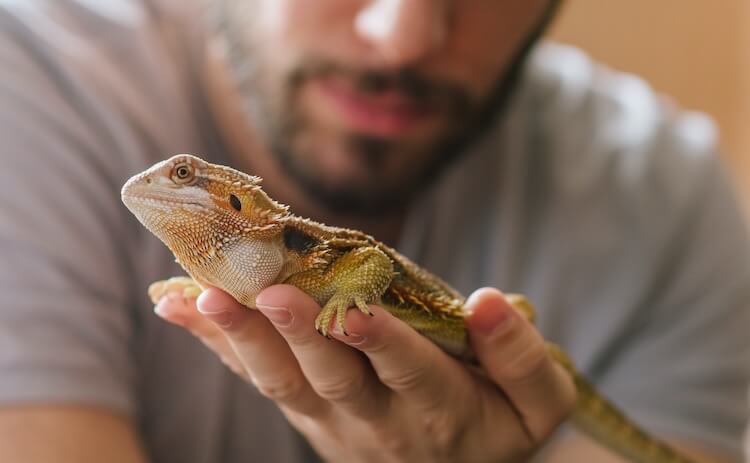
Lizards vary greatly in their ability to tolerate handling.
Some species like Leopard Geckos are highly social reptiles and enjoy human interaction and handling. However, there are many lizards like the Anole that live best without being handled at all.
Many beginners make the mistake of handling their lizard too often or too little. Sociable lizards should have at least an hour of socialization per day.
However, too much handling for some species will cause stress and in extreme cases will cause them to lose their tails.
Most lizards should be held with open palms.
Larger species such as monitors should be handled with two hands.
There are several rules beginners aren’t aware of when handling their pet lizard:
- Gently handle your lizard and never hold them by the tail or legs.
- Don’t hold them above your head or high places – some lizards are jumpers
- Be aware of your lizard’s behavior and wear gloves if necessary – some like to bite!
- Don’t handle any lizard during their first few weeks in your home.
- Always supervise children when they are handling a reptile.
Mistake 3: Wrong Humidity Levels
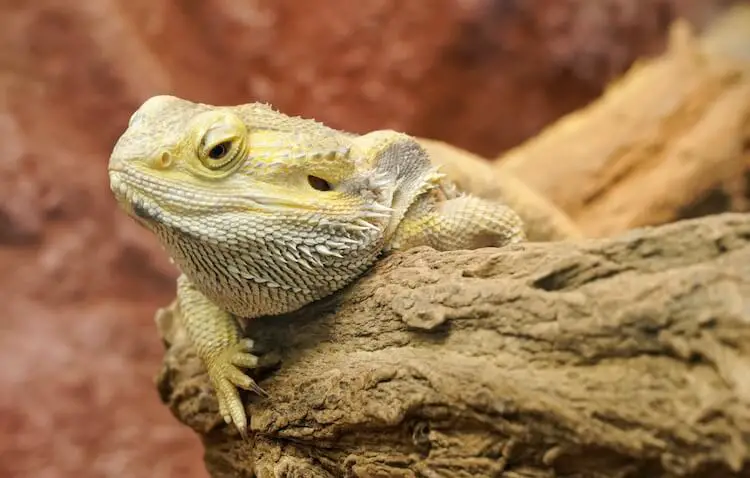
Lizards thrive in captivity when their enclosure replicates their natural habitat.
Most captive lizards come from climates that have very specific humidity levels.
Some species are native to Australia and tend to like dry environments. Many are found in tropical rainforests and require very high humidity levels.
If the humidity level is not controlled and kept consistent it will cause many health problems.
Most pet lizards thrive in high humidity. However, species that thrive in low-humidity environments will develop fungal or bacterial infections if they are kept in high humidity.
The opposite is also true. Lizards will become dehydrated if they live humidity levels that are too low.
To avoid this mistake you should research the specific needs of your reptile and keep a humidity gauge in the tank. Some beginners also prefer to use an automatic misting system.
To keep humidity levels low place water dishes on the cool side of the tank and avoid putting live plants in the enclosure. To increase humidity levels mist the tank daily and keep your lizard’s water dish under a heat lamp.
When you mist the tank, do not use distilled water, as some lizards take in minerals from these water droplets.
Mistake 2: Wrong Enclosure Size
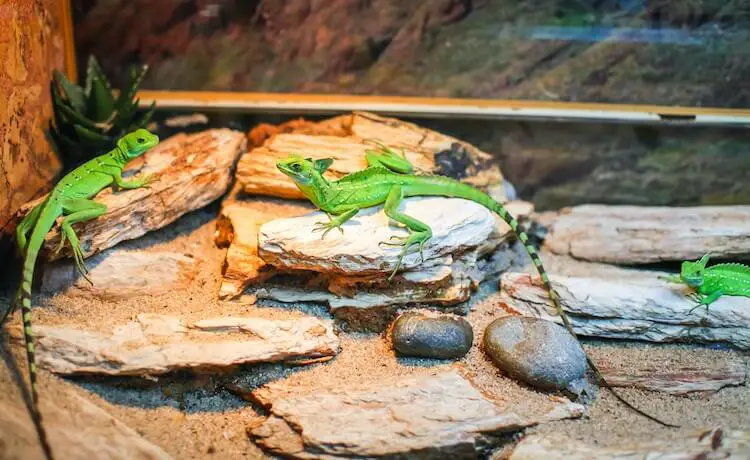
Another common mistake made with pet lizards is providing an inadequate enclosure or terrarium.
Sometimes beginners provide the wrong enclosure type, but more commonly they provide one that is too small.
When purchasing an enclosure research how big it should be.
As your lizard grows they will need a larger terrarium. Don’t be unprepared with an enclosure that is too small for an adult lizard.
Their terrarium should include various furniture for your lizard. This can include fake or live plants, hiding places, rocks, and logs. Most, if not all, pet lizards require this to feel safe and secure in their tanks.
The habitat should be fully set up with the proper heating and lighting.
Mistake 1: Providing The Wrong Diet
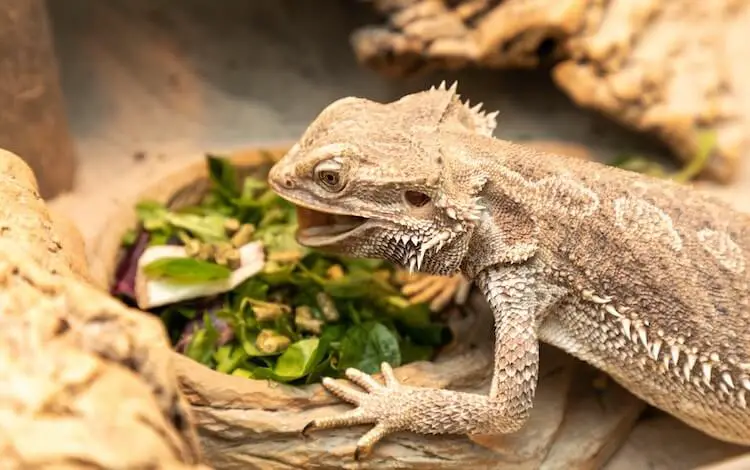
Many health issues arise from an improper diet.
Diets and the amount to feed varies from species to species.
Unfortunately, some beginners underestimate how much lizards rely on their very specific diets.
Many lizards are omnivores and require both plants and animals. This normally includes fruits, vegetables, gut-loaded insects, and even small rodents.
One common mistake is owners who confused “eat a wide variety of foods” to mean “feed one of these”.
Lizards need a variety of foods for a balanced diet.
For most lizards you should not strictly feed carrots and crickets. Your pet should also have a variety of other invertebrates and vegetables too. You should also avoid feeding any commercial diets.
Some of the most common health issues and diseases are a direct result of a poor diet.
Metabolic bone disease is a condition resulting from a lack of calcium in the diet. It will cause your lizard to be slow and sluggish.
Hypovitaminosis A is another health issue caused by a poor diet and a lack of Vitamin A.
Both diseases are much easier to prevent than to cure.
Finally, obesity is a very common issue because owners mistakenly feed their lizard treats or more food than is necessary.
Summary
Lizards need a correct enclosure, substrate and diet. They also need routine husbandry.
Many mistakes can be made when caring for lizards but most relate to poor husbandry and are easily avoidable.
Before you bring home a lizard make sure their enclosure is fully set up and you have researched the species.
Do you have an experience you would like to share with us? Comment below!

